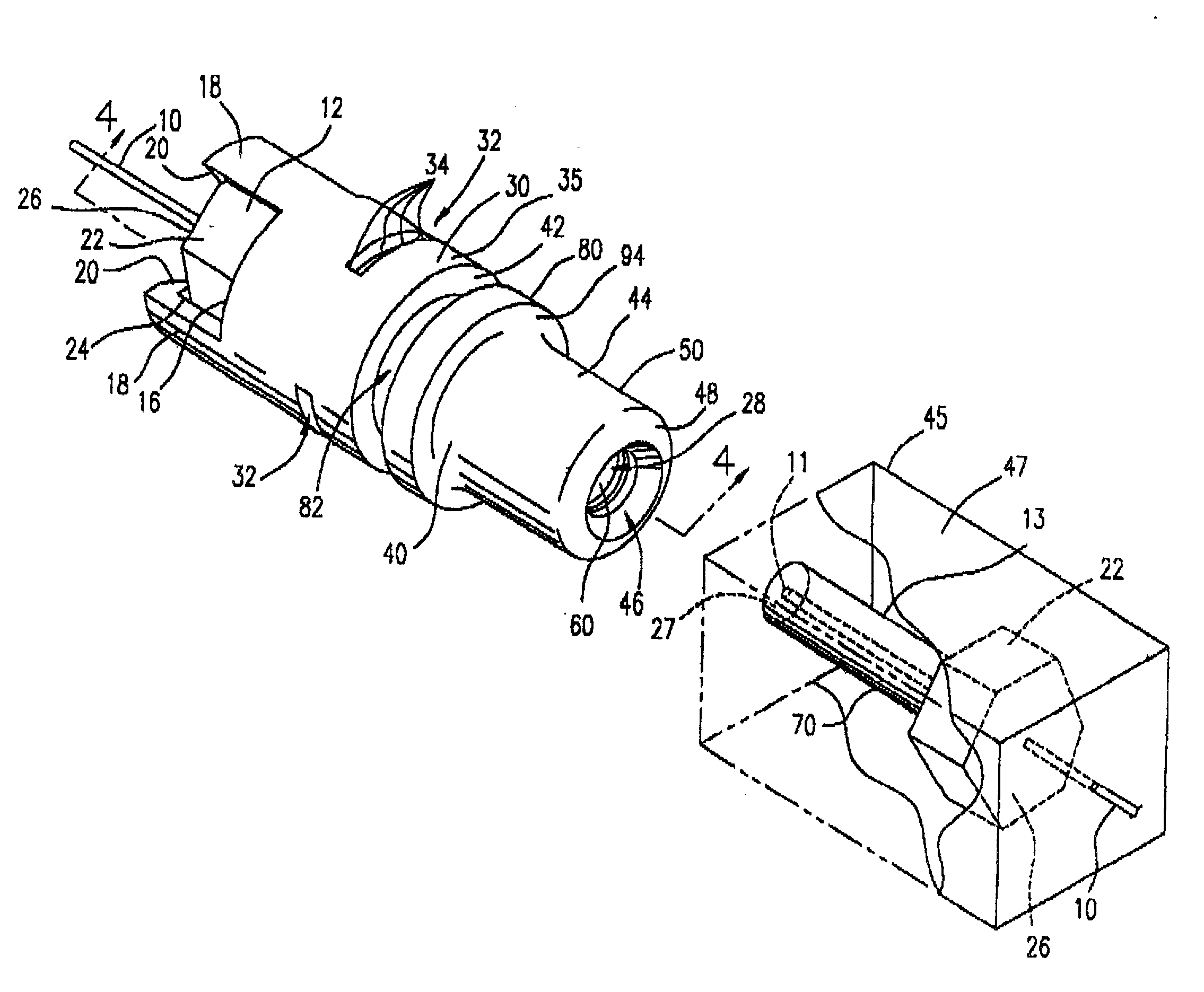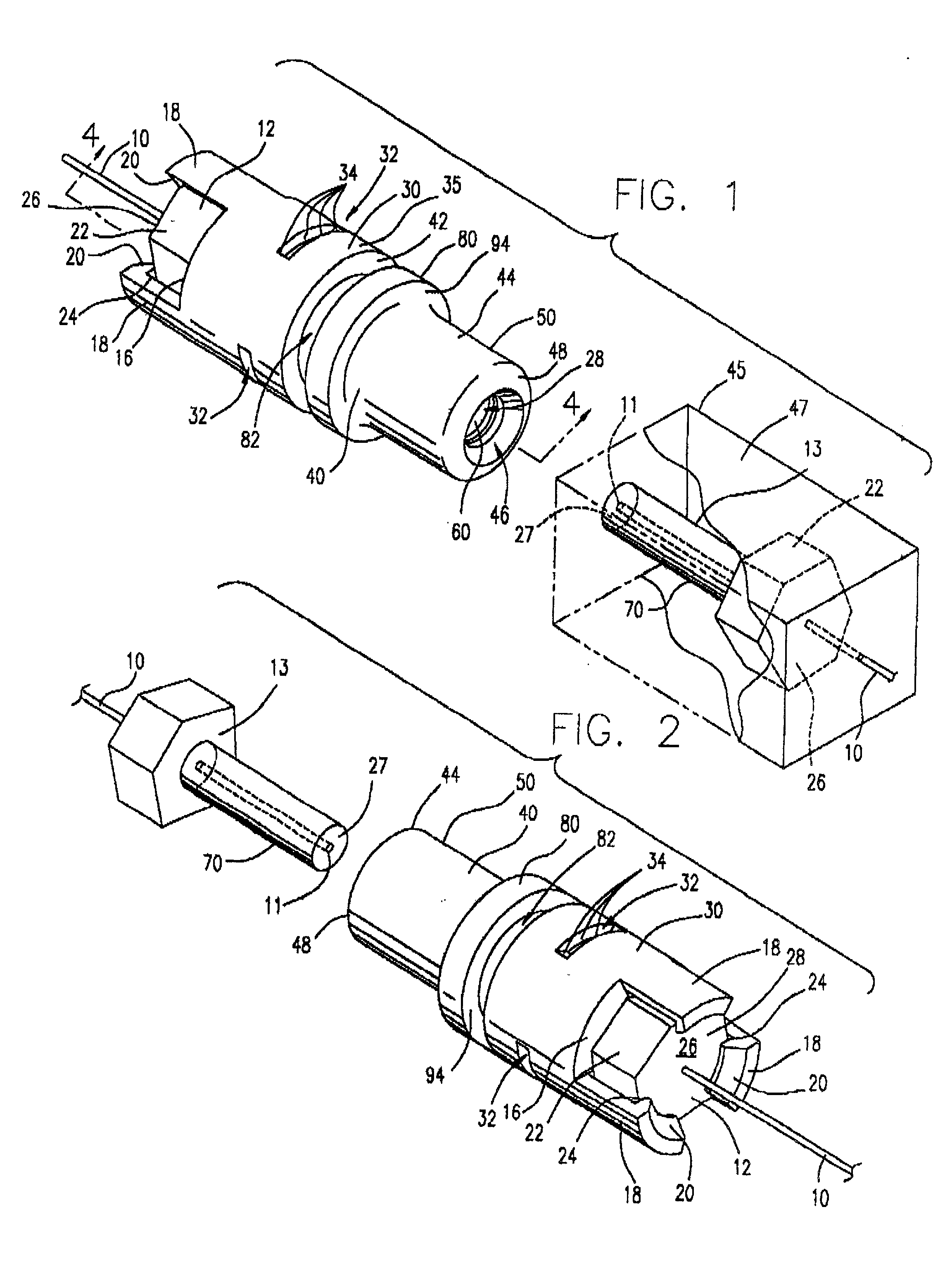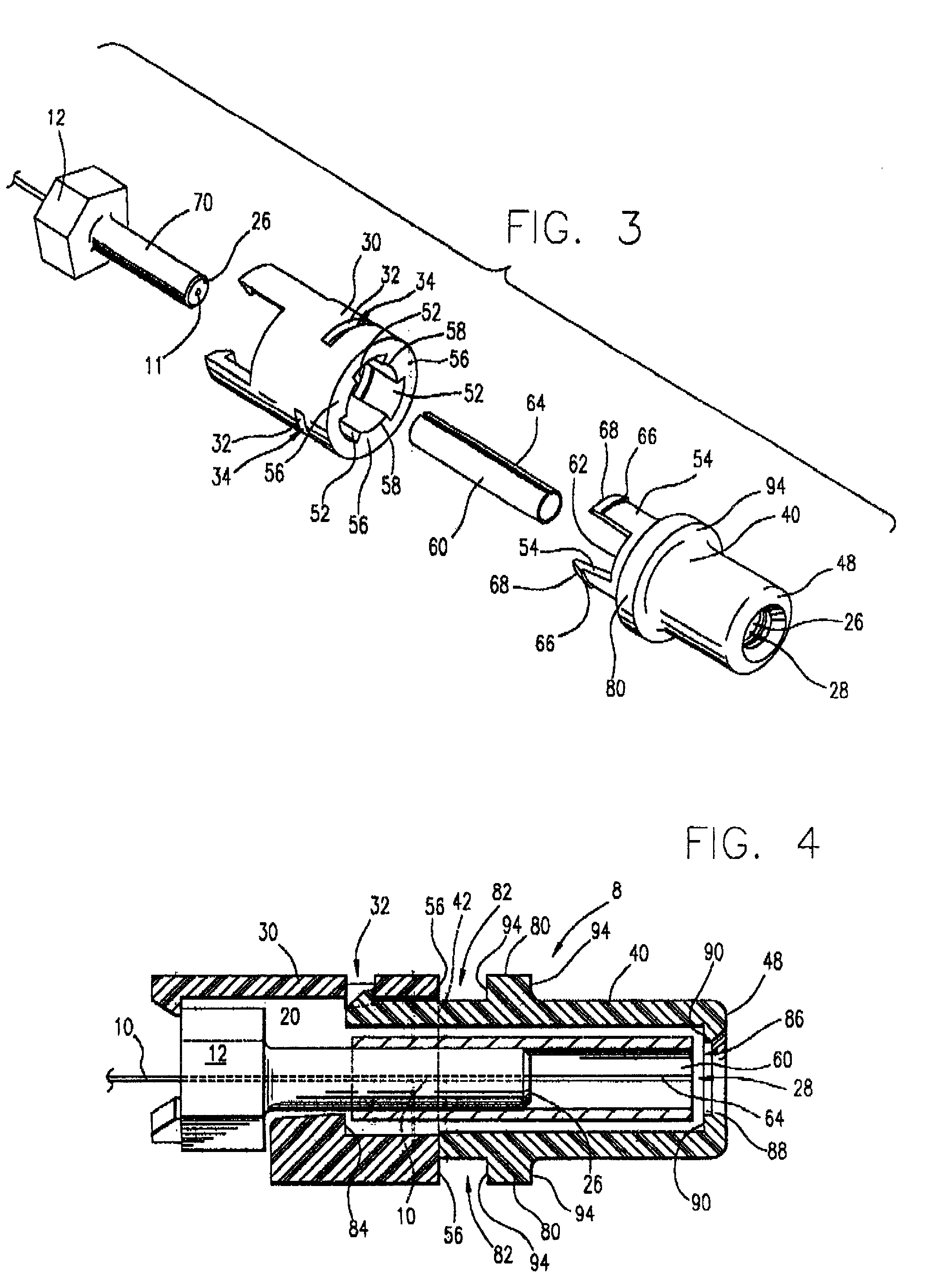Optical fiber coupler and an optical fiber coupler incorporated within a transceiver module
- Summary
- Abstract
- Description
- Claims
- Application Information
AI Technical Summary
Benefits of technology
Problems solved by technology
Method used
Image
Examples
Embodiment Construction
[0023] Referring initially to FIGS. 1 and 2, the coupler 8 of the invention is illustrated in elevated isometric views from each end thereof.
[0024] An optical fiber 10 is shown inserted into a ferrule 12. The ferrule 12 is attached to the optical fiber 10 either by potting the optical fiber 10 within the ferrule 12 with an epoxy or other hard setting potting compound to fix the optical fiber 10 relative to ferrule 12. If the optical fiber 10 is metal clad, the ferrule 12 and the clad optical fiber 10 may be soldered. Polished end face 11 of optical fiber 10 is preferably flush with the end face 26 of the ferrule 12 and the end face and the optical fiber are slightly rounded into a convex end face 26. The ferrule 12 is shown inserted into a first coupler member 30.
[0025] A plurality of latch retainers 18 are formed on one end 16 of the first coupler member 30. Latch retainers 18 each have tapered surfaces 20 which converge and form camming surfaces 20 so they engage the enlarged port...
PUM
 Login to View More
Login to View More Abstract
Description
Claims
Application Information
 Login to View More
Login to View More - R&D
- Intellectual Property
- Life Sciences
- Materials
- Tech Scout
- Unparalleled Data Quality
- Higher Quality Content
- 60% Fewer Hallucinations
Browse by: Latest US Patents, China's latest patents, Technical Efficacy Thesaurus, Application Domain, Technology Topic, Popular Technical Reports.
© 2025 PatSnap. All rights reserved.Legal|Privacy policy|Modern Slavery Act Transparency Statement|Sitemap|About US| Contact US: help@patsnap.com



